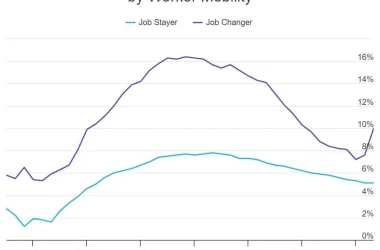By Douglas Imbrogno
The Charleston Gazette-Mail
CHARLESTON, W.Va. — Founded in 1994, the West Virginia Film Office — and a tax credit program designed to encourage production companies to shoot in the state — would be eliminated if the Legislature approves budget measures proposed Tuesday in Gov. Jim Justice’s first State of the State speech.
It was one of several agencies, including other arts and media-related groups, such as West Virginia Public Broadcasting, for which Justice proposed removing all or most state funding to cut $26.6 million in spending out of the state budget.
At least one report has questioned whether programs like the film tax credit have generated the “bang for the buck” they promise, but supporters of the credits say the program and film office have been an economic boon to the state.
“Clearly, this is a revenue-generating program,” said Bill Hogan, a managing member of Image Associates LLC, a West Virginia-based advertising and media production house.
“For the governor to cut it makes absolutely no sense, particularly if he is trying to diversify the economy of West Virginia, move us away from coal and dependence on our natural resources and into a nice clean industry for West Virginia that clearly has brought tremendous rewards to our people since its inception.”
Pam Haynes, director of the Film Office, referred all comments on the proposed cuts to a Department of Commerce spokeswoman who had not yet responded to news media inquiries by press time Friday. The film office is part of the state tourism division, which is an agency under the Department of Commerce.
Justice proposed eliminating state funding of $341,000 to the Film Office, along with canceling the Film Investment Tax Credit program. The program — launched in 2007 with support from former Charleston resident and Hollywood star Jennifer Garner — offers up to $5 million in annual tax credits to production companies to encourage them to film in West Virginia.
Since the Film Office’s inception, a host of film, video, commercial and still-photography shoots have taken place in West Virginia. These have ranged from portions of high-profile productions shot here, such as “We Are Marshall” and the JJ Abrams/Steven Spielberg film “Super 8,” to five Stephen David Entertainment mini-series for AMC and other cable channels. There have been hundreds of other productions, including numerous projects by state businesses.
More than $43 million has been spent in the state on direct expenditures on film and video productions — from wages, hotel rooms, restaurants, props and other expenses — since the tax credit program went into effect in 2007. That is according to a 2013-14 Film Office report on the Film Industry Investment Act (the name of the bill that authorized the tax credit program and the latest available report).
In return, production companies received a total of $13,258,000 in tax credits, meaning that much less in taxes was paid into the state treasury.
“You have a net profit of $30 million that this program has brought to the state of West Virginia,” Hogan said. “Any businessman, including Jim Justice, should get that one.”
The 2013-14 report, which also includes preliminary data from 2015, states that the film tax credits have attracted film and video shoots that have been “directly responsible for creating 1,858 jobs, 72 new businesses” and made use of the services of more than 4,700 West Virginia businesses.
A production company can earn a tax credit of 27 percent if it spends at least $25,000 in the state. The credit goes up to 31 percent if it hires 10 or more West Virginia residents as crew or talent during a shoot, a measure intended to help grow film production talent in the state.
An out-of-state or in-state production company can then turn around and sell the tax credit to a West Virginia corporation or business wishing to reduce its corporate or individual tax burden. The credits can be used to reduce corporate net income taxes, business franchise taxes and personal income tax.
The film tax credits also aid West Virginia film and video production companies to be more competitive, according to Hogan, whose Image Associates earned the credits five times in the 2016 tax year.
“Part of what makes us competitive is, I’m able to do a production and then sell the tax credits and, therein, that keeps me profitable,” Hogan said. “Otherwise, my competitors from out of state would run me out of business. So, in other words, I can afford to be competitive with out-of-state companies because of the tax credit.”
Compared to other states, West Virginia has a very low amount devoted to its film tax credit program, which was cut in half from its initial $10 million to $5 million effective in 2013.
The 2013-14 film tax credit report noted that, as a result of that cut, the “Walt Disney Company, ABC Television Studios, Warner Bros., Paramount Pictures as well as numerous other smaller studios, have repeatedly stated that they no longer look at West Virginia for locations because their production budgets are too large for West Virginia’s incentive program.”
For his part, Hogan said that, even at its current size, the tax credit program and efforts by the Film Office to attract productions to the state have created a growing film and video production economy.
“Really, the program is in its infancy. I have never seen so much activity in our state in my 20 years of producing films, videos and commercials in the last five to seven years since the program has been in existence. It is really just fiscally wrong to try to cut these programs.”
Diana Sole, president of the Charleston-based Motion Masters, said she also has seen her business benefit from the tax credit program.
“My company has used the film credits to produce educational videos sold to schools, libraries and colleges all over North America,” she said.
Additionally, Motion Masters has sold film tax credits to fund new projects, such as programs for Fido TV and a documentary about West Virginia native Katherine Johnson, whose life as a NASA mathematician is profiled in the film “Hidden Figures.”
“I think its very important to understand that the film office is really in the business of economic development,” said Sole.
“The tax credits have helped put people in hotel rooms, it has put crew into local restaurants. It has helped fund the hiring of a lot of West Virginia’s indigenous film community,” she said. “This is a governor and this is a Legislature who says their No. 1 priority is economic development and jobs, jobs, jobs. The Film Office and the film investment tax credit yields jobs, jobs, jobs.”
But are film tax credits all they’re chalked up to be?
The evening of Justice’s State of the State speech, when the Film Office cuts were announced, Ted Boettner, executive director of the West Virginia Center on Budget & Policy, tweeted that: “Eliminating the Film Tax Credit is also a good idea. They don’t have a good track record.”
He linked to an extensive Dec. 9, 2010, report, titled “State Film Subsidies: Not Much Bang For Too Many Bucks,” by the Center on Budget and Policy Priorities, in Washington, D.C.
In an interview, Boettner questioned the reputed benefits of film tax credits.
“We have no idea whether we’re getting a good bang for our buck or not,” he said.
“Having a vibrant film industry in West Virginia is important to our economy and quality of life, but the real question is what are we willing to pay to bring them here? Would they come without the credit?”
Such credits might provide a good return on investment — especially for smaller film projects, Boettner said. “But we have no idea what kind of bang for our buck we are getting. Incidentally, this is true of almost all corporate tax credits in West Virginia,” he said.
One study, from the Legislative Fiscal Office in Louisiana, estimated that the state only recovers about 16 percent to 18 percent of lost taxes, Boettner said.
“There have been other studies in states that have found similar results,” he said. “A couple of reasons that film tax credits may be ineffective is because most of the jobs are temporary, with some people just working for a week or two. Many of the jobs also comprise nonresidents who have expertise and are coming from New York or somewhere else.”
Reach Douglas Imbrogno at [email protected], 304-348-3017 or follow @douglaseye on Twitter.
– See more at: http://www.wvgazettemail.com



